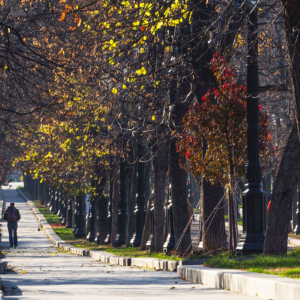New book explores how Toronto-centric planning has been bad for much of Ontario
June 18, 2012
Now I live in Gatineau and work in Ottawa, but the Toronto-centric media makes one forget that Ontario is a big province with many distinctive cultures and ecologies. I can also see the result of Toronto centrism in planning and policy in Ontario. So I was very interested to see this new book was coming out that explores this issue, edited by distinguished Professor and Geographer Gordon Nelson, with many familiar names on the list of contributors. In his own words, Dr. Nelson describes the book in this way.
“Beyond the Global City, Understanding and Planning for the Diversity of Ontario is a reaction against the Toronto centred approach that Ontario has used in developing the province with often damaging consequences for biodiversity, wetlands, the coasts and environment generally as well as local economies and communities. Chapters on the many near forgotten regions of Ontario – including those on Carolinian Canada, Peterborough, Ottawa, Kingston and the Islands, Huron County, Muskoka – Georgian Bay and the North – are written by knowledgeable local authors. The book describes the distinguishing ecological and other characteristics of the regions and their individual planning needs which are frequently not being met by top down Toronto-centred planning. The book calls for a strengthening of regional planning and a more locally effective approach to conservation and development. This is an informative and valuable read for naturalists. It gives the big picture behind many local and regional environmental and related issues and calls for more locally based planning to address them.”
I see expressions of the book’s thesis in the way the Province has rolled out its Renewable Energy Act. While good in theory, in practice, one consequence of the centralized decision making that is a key part of the Act, is the removal of important checks and balances with regard to siting decisions, that should be part of a rational decision making (planning) process. Diminishing local imput and knowledge results in projects being built (e.g. Wolfe Island), or proposed (e.g. Ostrander Point, Amherst Island) in inappropriate places where they will most certainly offset their green dividends with a high cost to wildlife and biodiversity.
I look forward to reading Beyond the Global City, and to gaining new insights into the consequences of Toronto-centric planning on Ontario’s culture and ecology.



